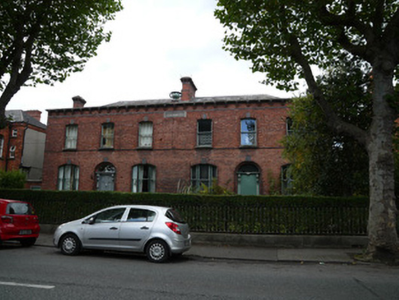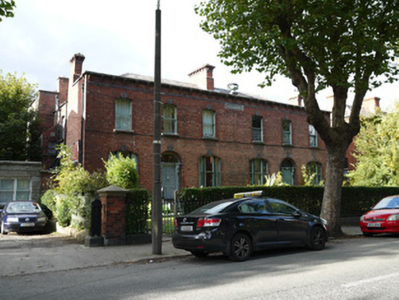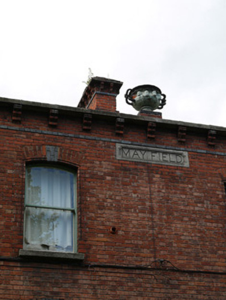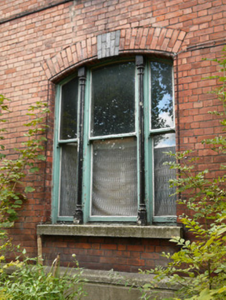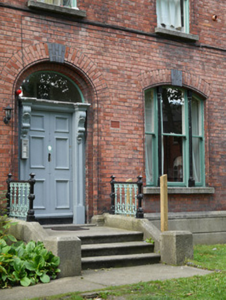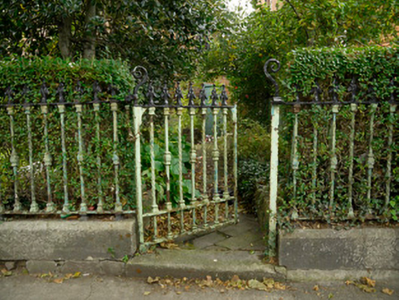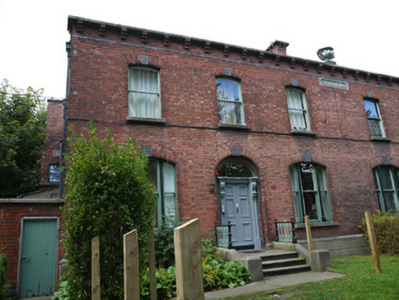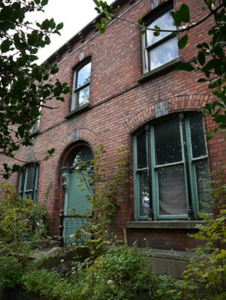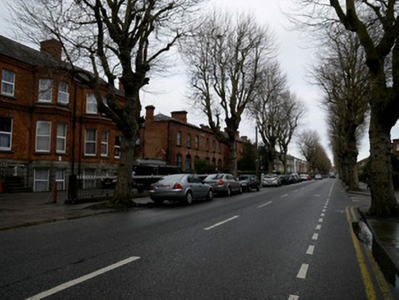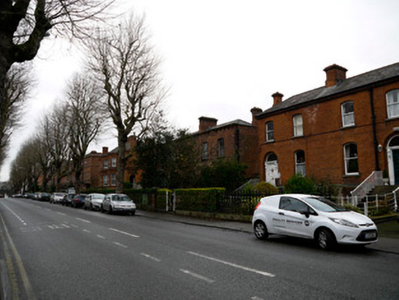Survey Data
Reg No
50070003
Rating
Regional
Categories of Special Interest
Architectural, Artistic
Original Use
House
In Use As
House
Date
1890 - 1910
Coordinates
313497, 235042
Date Recorded
06/10/2012
Date Updated
--/--/--
Description
Pair of semi-detached three-bay two-storey houses, built c.1900. Shared slate hipped roof having parapet to front. Cut granite coping to parapet supported by red brick corbels. Painted terracotta urn mounted to centre of parapet having four relief figureheads to front. Red brick chimneystacks having corbelled cornices. Red brick walls laid in Flemish bond having black brick course. Cut granite plinth. Cut granite name plaque to front elevation at first floor level. Segmental-arched window openings having moulded surrounds, black brick keystone detail and cut granite sills. One-over-one pane timber sash windows, tripartite to ground floor with carved mullions. Round-arched door openings, each with painted render surrounds having fluted corbelled brackets supporting a cornice. Plain fanlight. Timber panelled door to no.35, flush metal facing to door of no.37. Cut granite steps with nosings leading to entrance platforms, having cut granite retaining walls with cast-iron railings. Set back from road having front gardens enclosed by cut granite plinth with cast-iron railings and pedestrian gate.
Appraisal
The symmetrical elevation with central name plaque and urn presents the pair of houses in a villa style that is suited to the broad and leafy character of the North Circular Road. Early features remain intact such as the brickwork, windows, and door surrounds. The front gardens and boundary railings contribute to the character of the streetscape. As well as forming an attractive pair, these houses contribute to a larger group of late-Victorian houses, formerly known as Belmont Terrace. The pair was a later insertion. The North Circular Road was laid out in the 1780s to create convenient approaches to the city. It developed slowly over the following century with the far west and east ends developing last.

